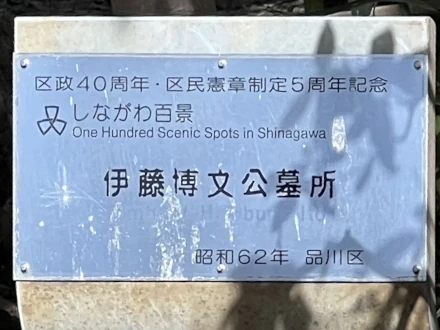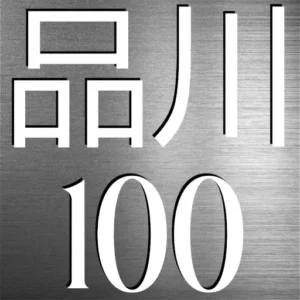🪦 Tomb of Hirobumi Itō – Legacy in Stone
Hidden in a quiet cemetery at 6-10-18 Nishi-Ōi, Shinagawa, Tokyo, the Tomb of Hirobumi Itō marks the final resting place of one of modern Japan’s most influential political figures. As the first Prime Minister of Japan and a major architect of the Meiji Constitution, Hirobumi Itō’s grave is more than a burial site—it’s a monument to Japan’s transformation from a feudal society to a constitutional empire.
📜 Humble Beginnings and Samurai Ascent
Hirobumi Itō was born in 1841 in the Chōshū Domain (modern-day Yamaguchi Prefecture) to a low-ranking samurai family. Originally named Risuke, he later studied at the famed Shōka Sonjuku academy under Yoshida Shōin. From his youth, he was involved in anti-Tokugawa activities, including the famous burning of the British Legation in Edo.
🌍 A Journey Abroad That Changed a Nation
In 1863, Itō became one of the “Chōshū Five” who secretly traveled to Britain. There, he witnessed Western industrial and political systems that would forever shape his worldview. He returned to Japan a firm believer in modernization, helping to lay the groundwork for the Meiji Restoration.
🏛️ Architect of Constitutional Japan
Hirobumi Itō’s most lasting legacy was his leadership in drafting the Meiji Constitution, which he modeled on the Prussian system after further study in Germany and Austria. He served four times as Prime Minister (the 1st, 5th, 7th, and 10th), established Japan’s cabinet system, and became the first President of the Privy Council.
⚔️ War, Diplomacy, and Leadership
Itō oversaw Japan’s victory in the First Sino-Japanese War and helped negotiate the Treaty of Shimonoseki. He was also instrumental in the founding of Japan’s first political party-led government through the Rikken Seiyūkai party. In 1905, he became the first Resident-General of Korea, though he reportedly opposed full annexation.
🕊️ Assassination and National Mourning
On October 26, 1909, Hirobumi Itō was assassinated at Harbin Station by Korean nationalist Ahn Jung-geun. His death sent shockwaves through Japan and the world. He was given a state funeral, and his remains were interred in a prominent grave in Shinagawa—a city he had strong ties to through his political career.
Final Reflections at the Tomb
Visiting the Tomb of Hirobumi Itō today is a serene yet poignant experience. Surrounded by trees and historic gravestones, it invites contemplation on the enormous influence one individual can have on the course of a nation’s history. His legacy—shaped by reform, diplomacy, and leadership—continues to resonate in modern Japan.
Visitors will find a discreet signpost and pathway that leads into the temple grounds. While photography is allowed, respectful behaviour is a must — this is still a functioning family graveyard. The site is open to the public for a few days each November during Cultural Heritage Week.
Cultural Heritage Week (文化財ウィーク)
Cultural Heritage Week, known in Japanese as 文化財ウィーク, is an annual event dedicated to celebrating and preserving Japan’s rich cultural assets. During this week, various historical sites, including the tomb of Hirobumi Itō, host special events and open their doors to the public, fostering a deeper appreciation for the nation’s heritage.
🧭 Visitor Information
Address: 6-10-18 Nishi-Ōi, Shinagawa, Tokyo 140-0015
Access: 5-minute walk from Nishi-Ōi Station
Best season: November during Cultural Heritage Week
Admission: Free (limited public access during Cultural Heritage Week in November.1)
Official Info: None
Note: Please be quiet and respectful. This is an active gravesite, not a tourist attraction.
- In 2024 it was open 2nd – 4th November, with public holiday Culture Day (文化の日) being annually on November 3rd. So it’s likely to be open on that day this year. ↩︎
Where is it?
| what3words | ///paradise.trunk.sailed |
| latitude longitude | 35.6002, 139.7203 |
| Nearest station(s) | Nishi-Ōi Station (Yokosuka and Shonan Shinjuku lines) |
| Nearest public conveniences | Nishi-Ōi Station and public parks nearby |
Show me a sign.

Well inside the locked gates the sign is barely readable for most of the year. This man without-a-name is respected and loved by many but not birds, obviously. The Kanji is doing well, at least.
Withervee says…
One of those spots that rewards a reflective mood. If you’re interested in Meiji history, this is sacred ground. If not, it’s still a beautiful walk tucked away in the residential heart of Shinagawa.
Site Character
- Lifestyle 生活 (Seikatsu): ✔️
- Historical Significance 歴史 (Rekishi): ✔️
- Atmosphere/Natural Features 風土 (Fūdo): ✔️
Who in their right mind would vote for this?
- History lovers
- Japanese politics students
- Quiet walkers
- Diplomacy nerds
- Gravestone sketchers
Further reading
While you’re there…
Round off your visit with a quiet stroll to Yōgyokuin Nyoraiji Temple or enjoy the Nishi-Ōi station neighbourhood for some time to reflect.

